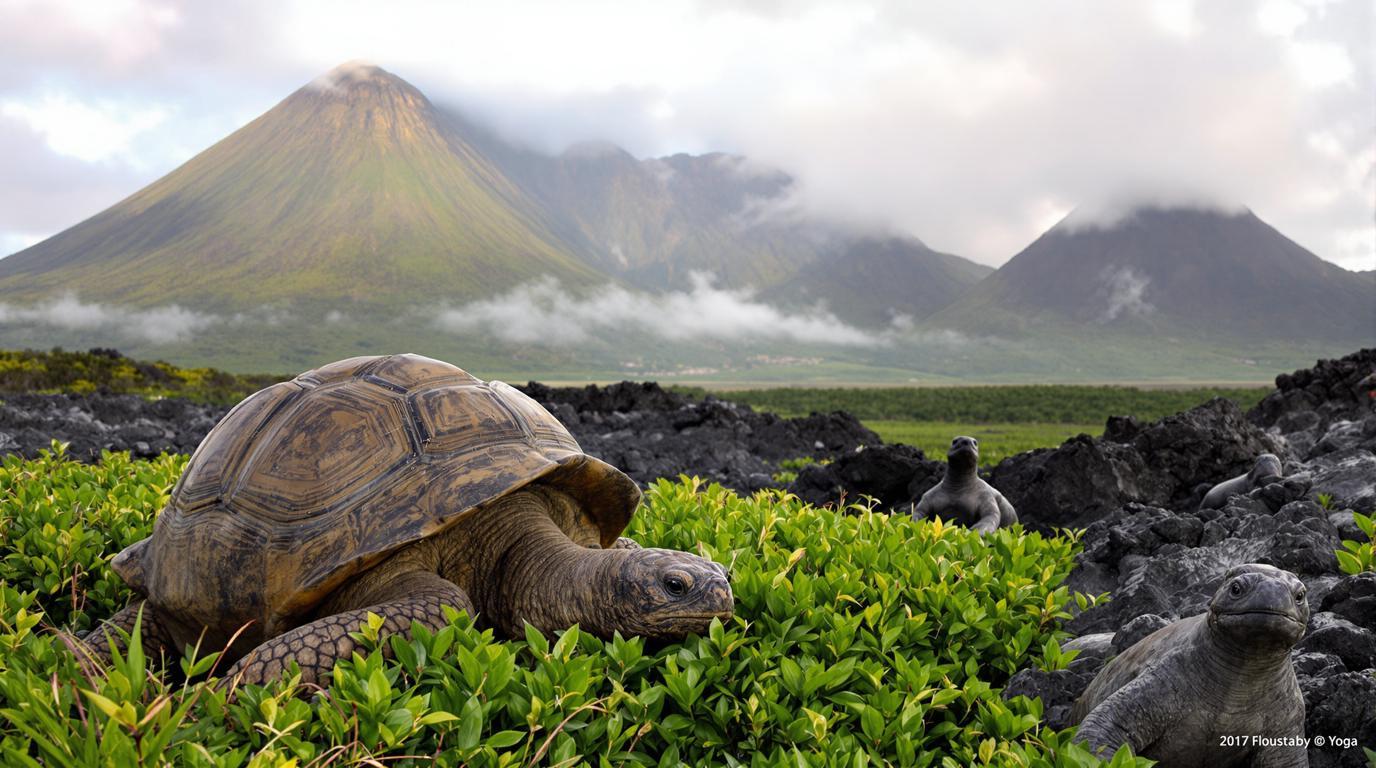The Galápagos Islands sit like a natural laboratory at coordinates 0.8300° S, 89.5000° W, where evolution’s grand experiment continues daily. These volcanic outcrops, perched 600 miles off Ecuador’s Pacific coast, host creatures that have been evolving in splendid isolation for millions of years. At the heart of this remarkable archipelago lies Santa Cruz Island, a microcosm of the natural wonders that inspired Darwin’s theory of evolution nearly two centuries ago.
The living laboratory that changed science forever
Santa Cruz serves as the archipelago’s tourism hub, but don’t let its accessibility fool you. This island delivers extraordinary encounters with species found nowhere else on Earth. The island’s elevation reaches 864 meters at Cerro Crocker, creating distinct ecological zones from coastal mangroves to misty highlands where giant tortoises roam freely.
Marine biologist Elena Vasquez explains:
“What makes Galápagos unique isn’t just the wildlife, but how fearless these creatures are. They’ve evolved without natural predators, so they don’t view humans as threats – allowing for remarkable close encounters.”
When to experience nature’s greatest show
December through May marks the warm season in Galápagos, with temperatures ranging from 75°F to 86°F. The waters reach their clearest and calmest during these months, creating ideal conditions for snorkeling with endemic marine species like playful sea lions, Galápagos penguins, and green sea turtles.
The islands transform during these months as marine birds engage in courtship displays. Blue-footed boobies perform their distinctive mating dance, lifting their brilliant azure feet high in the air in a hypnotic ritual that leaves visitors spellbound.
Santa Cruz’s unmissable natural wonders
Begin your exploration at the Charles Darwin Research Station, where conservation efforts have saved several tortoise species from extinction. Continue to the highlands, where private ranches offer glimpses of giant tortoises munching peacefully on vegetation – a sight reminiscent of living dinosaurs.
Tortuga Bay presents a postcard-perfect beach accessible via a scenic 40-minute trail. Its powdery white sand contrasts dramatically with volcanic black rocks where marine iguanas bask in the equatorial sun. The protected cove on the bay’s western end provides calm waters for kayaking among mangroves teeming with life.
Volcanic landscapes that inspire awe
The archipelago’s geological history creates otherworldly landscapes that rival the biological wonders. Los Gemelos (The Twins) feature two massive sinkholes surrounded by scalesia forests – the Galápagos equivalent of cloud forests. These collapsed lava chambers reveal the islands’ fiery origins and ongoing geological processes.
Nearby islands like Isabela showcase active volcanoes with calderas that plunge hundreds of feet deep. Local guide Marco Tupiza shares:
“Walking the rim of Sierra Negra volcano feels like traversing an alien planet. The scale is humbling – it’s one of the largest calderas in the world.”
Conservation at a crossroads
The islands face increasing tourism pressure, with visitor numbers rising steadily. The Galápagos National Park has responded by implementing strict regulations, including a recent increase in the entrance fee to $200 – funds directed toward preservation efforts.
Travelers seeking the most responsible experience should combine stays in eco-conscious accommodations with day trips or shorter cruises, minimizing their environmental footprint while still accessing remarkable volcanic landscapes and wildlife encounters.
Underwater safari in pristine waters
Perhaps the most extraordinary experiences in Galápagos happen beneath the water’s surface. Snorkeling spots around Santa Cruz deliver encounters with graceful eagle rays, white-tipped reef sharks, and marine iguanas grazing on algae – the world’s only sea-going lizards.
Marine conservationist Juan Ballesteros notes:
“The underwater ecosystems here represent one of the last places where you can witness marine life as it existed thousands of years ago, with top predators intact and complex relationships undisturbed.”
Beyond the tourist trail
While most visitors focus on well-known sites, Santa Cruz hides secluded treasures. Las Grietas offers a dramatic swimming experience between two towering volcanic walls in crystal-clear brackish water. Garrapatero Beach provides solitude and flamingo sightings away from crowds.
For adventurous souls, exploring lava tunnels reveals the island’s geological wonders from within – massive underground chambers formed by ancient lava flows that hardened on the outside while molten stone continued flowing through the center.
Santa Cruz represents just one chapter in the extraordinary natural narrative of the Galápagos. These islands demand respect and responsibility from visitors, but reward those who come with curiosity and reverence. Here, at evolution’s workshop, we witness nature’s endless capacity for adaptation and wonder – a living museum where the past and future of our planet converge in spectacular form.
